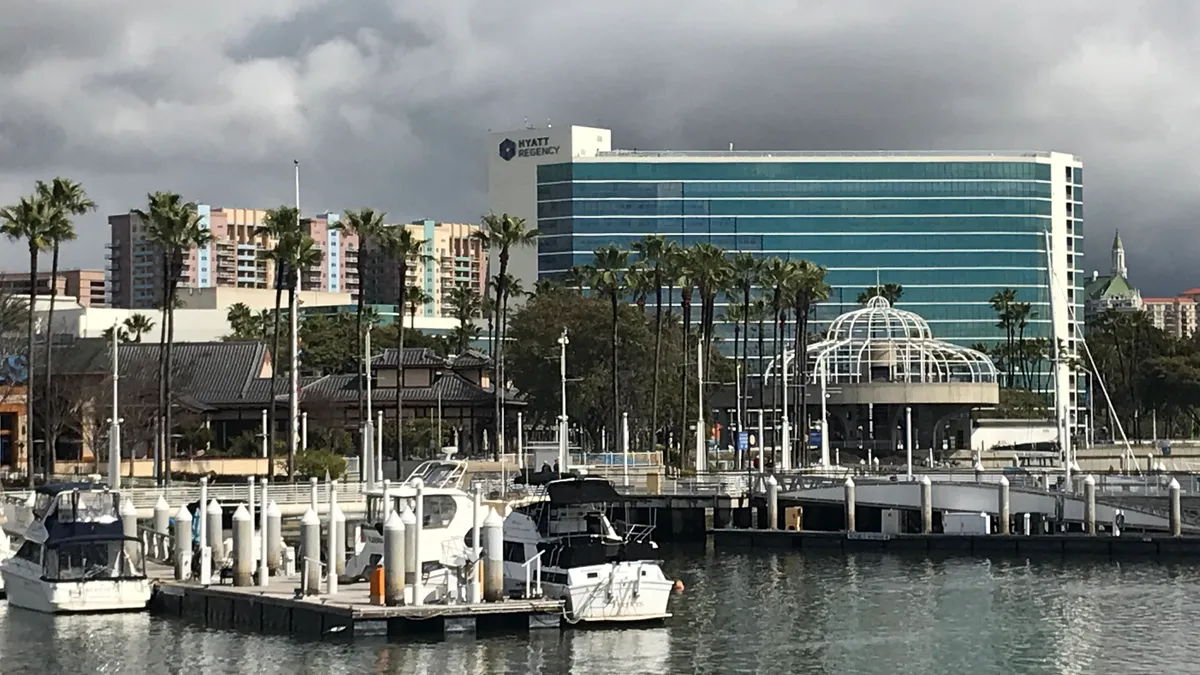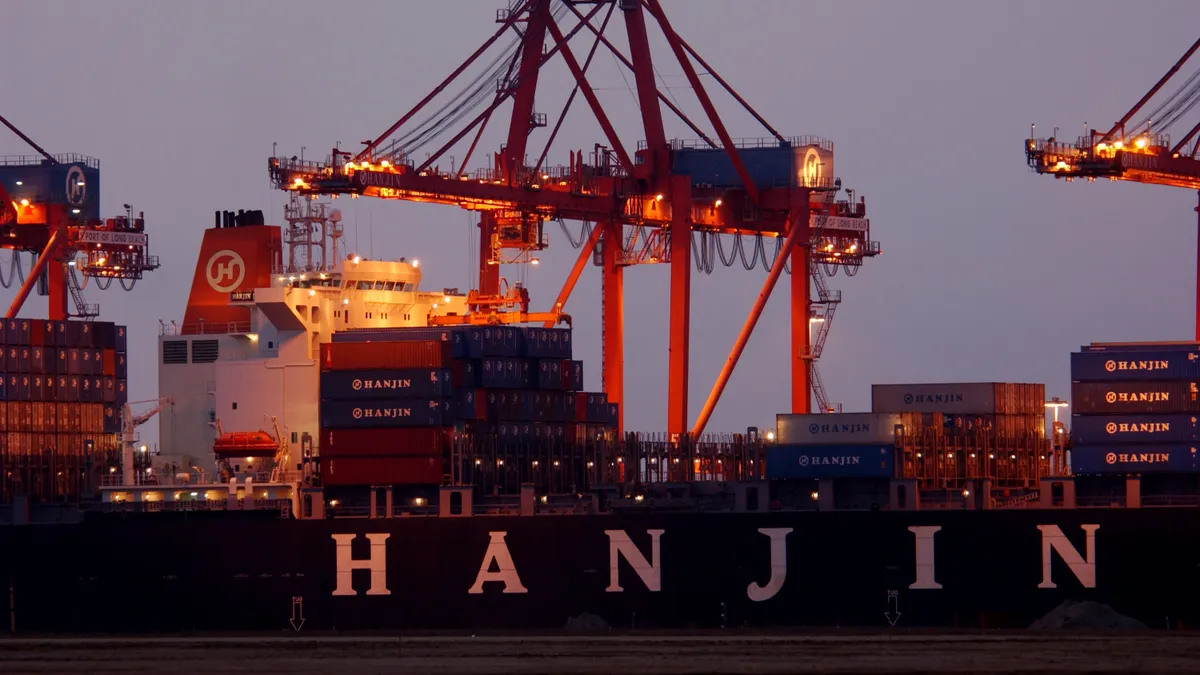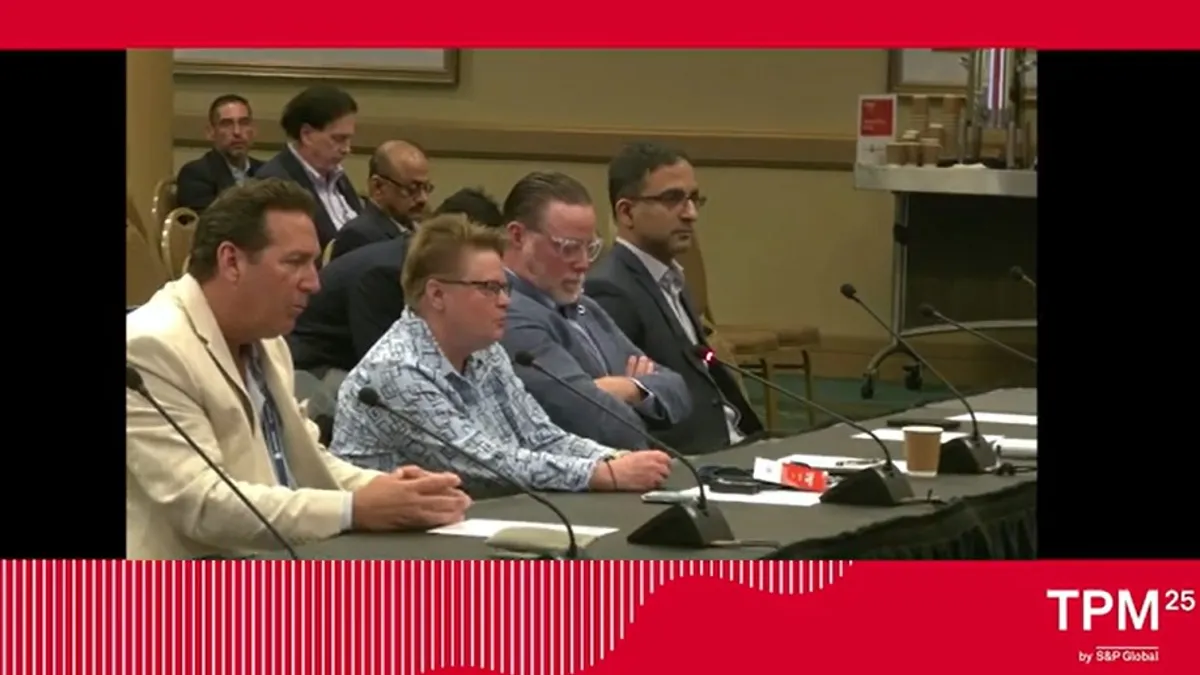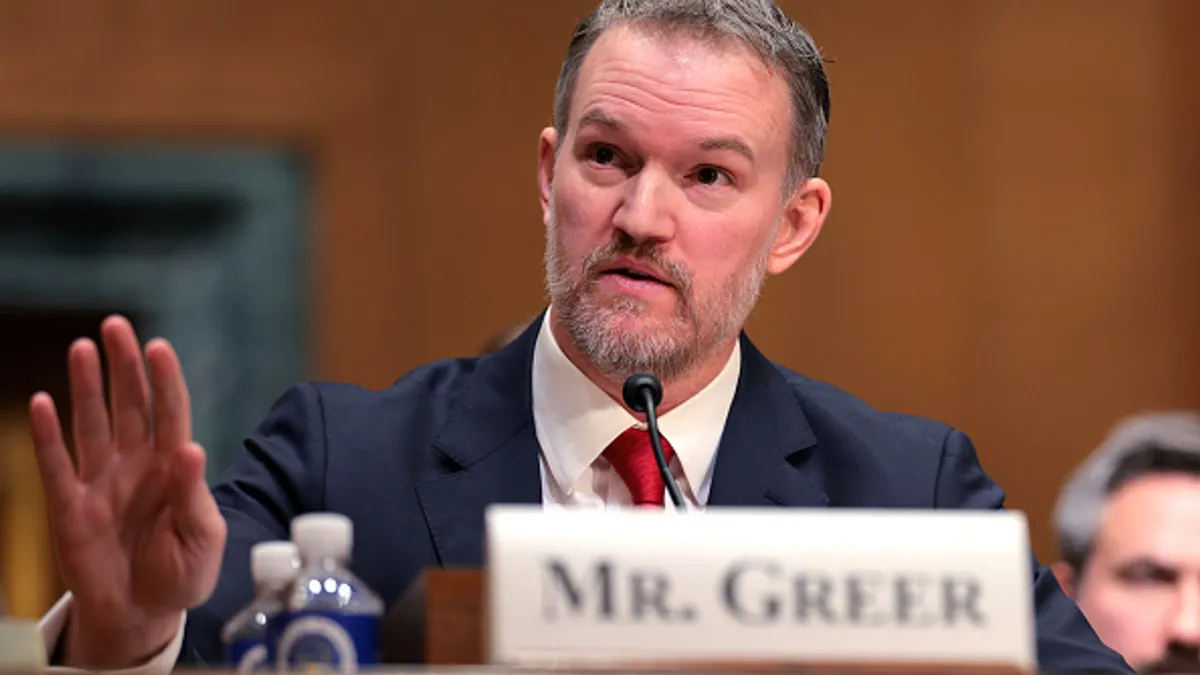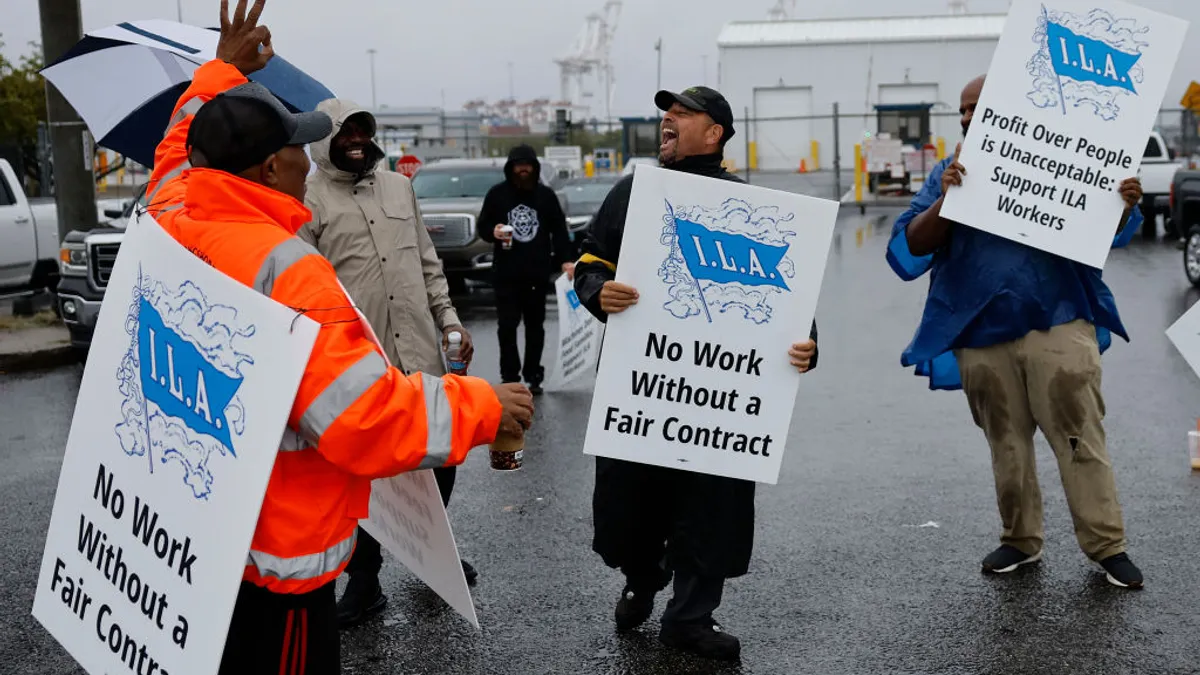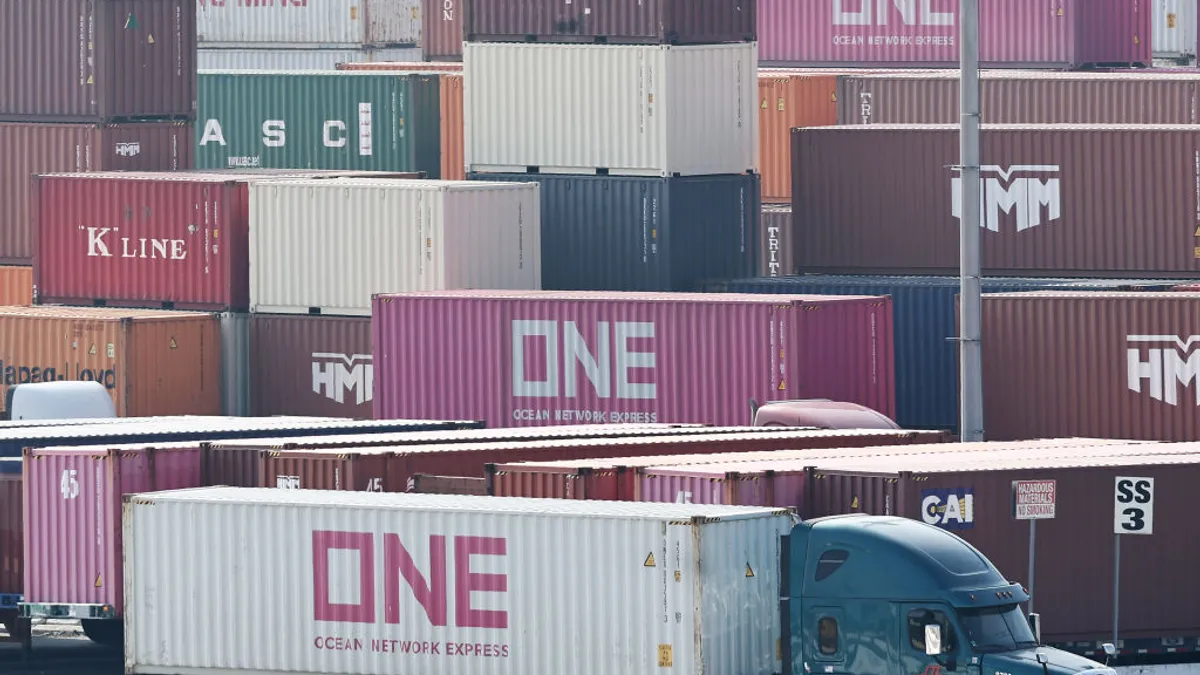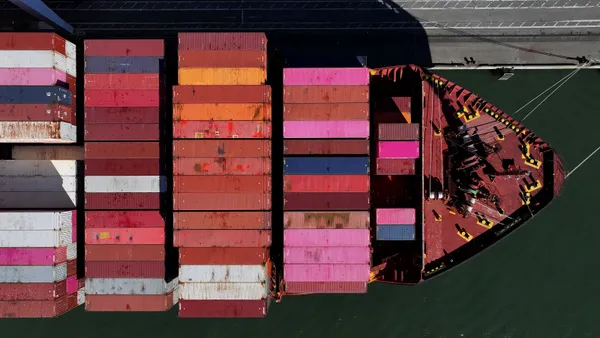A walk along the docks and ShoreLine Park in Long Beach, California brings with it sensory overload. The sights of boats of all shapes and sizes docking at the piers. The wafting smell of seawater and funnel cake. The sounds of blaring announcements of the next harbor cruise and electric scooters whizzing by.
Just across the way at the Long Beach Convention Center, the site of the TPM 2019 conference, a very different kind of stimuli permeated. The smell of coffee and more coffee. The sight of suits and more suits.
Most striking, however, was not something that could be seen, touched, smelled, heard or tasted. Instead, in every session or panel involving both shippers and carriers, a noticeable feeling of tension between the two parties permeated the air.
"It's a historic issue, the shipper and carrier dynamics," Port of Long Beach Executive Director Mario Cordero told me on the sidelines of the conference.
IMO 2020 will cost us billions, and we have to share the burden through a fuel surcharge or formula, say the carriers.
The low-sulfur formulas are too varied and complicated, and we just want standardization, say the shippers.
Schedule reliability isn't accurate, say the shippers. Cargo too often gets rolled over.
Shippers don't accurately forecast their cargo, say the carriers.
The conversations continue as such. And the tension and opposing perspectives go beyond just the shipper-carrier relationships.
Some shippers and 3PLs I spoke to at the conference complained about lack of efficiency and extreme congestion at the Ports of Los Angeles and Long Beach — especially in the last months of 2018 — as importers rushed goods in before the planned tariff hike.
They didn't hesitate to say they were not fans (and that's putting it lightly) of the truck appointment systems at the terminals. Instead of add efficiency for truckers, as PierPass claims to do, shippers and 3PLs said they felt the opposite effect — truckers waiting in long lines to enter the port often miss their appointment times and are then turned away, leaving shippers to pay demurrage fees.
But from the eyes of the port, it's a different story. Executives from the Port of Long Beach said turn times are down, and appointment systems are helping truckers complete dual transactions, where they drop off an empty load and pick up a full container all in one trip to the port. Predictability and efficiency were the words used to describe port and terminal operations as I took a boat tour along the Port of Long Beach.
Same situation, two very different viewpoints.
I'm sure the timing of the TPM conference, taking place as shippers and ocean carriers negotiate contracts for Transpacific routes, only adds to the tension between supply chain partners.
But when we take a macroscopic look at the issues in the business world and supply chain, carriers and shippers are largely in the same boat (sorry, I couldn't resist).
Three letters in particular are festering anxiety for executives in the ocean shipping industry: IMO.
In fact, the 2020 regulations for low-sulfur fuel were a designated theme for the conference, as shippers and carriers have just about nine months left before enforcement begins.
Daniel Yergin, vice chairman of IHS Markit, didn't bother to sugarcoat it. The transition to low-sulfur will not go smoothly, he told attendees. Anticipate a scramble. There will be winners and losers.
The regulations are bound to prove costly for carriers, as they invest in retrofits to ships, scrubbers and low-sulfur fuel; and to shippers, as they share in the cost burden to carriers.
Zoom out even further, and the future U.S. and global economies are beginning to look uncertain.
IHS Markit Chief Economist Nariman Behravesh predicted we could face a recession as early as next year.
The future of trade is unpredictable, with a 25% tariff hike in limbo. Although the tariffs provided a nice temporary boost to carriers and ports last year, carriers see future trade uncertainty as a damper on growth.
As we begin #TPM2019, no container ships anchored off LA-LB as far as I can see but recently there were as China tariff backups continued into 2019, showing how all the technology in the world can’t prevent policy makers from wreaking havoc on supply chains pic.twitter.com/Pw30DpSiAE
— Peter Tirschwell (@PeterTirschwell) March 3, 2019
With shippers and carriers battling these same macro problems, wouldn't it seem logical for them to be on the same side, rather than arguing over the minutiae of bunker formulas?
Cordero told me shippers and carriers are moving toward greater collaboration. Consultant Chuck McDaniel, founder of McDaniel Consulting, said during a panel discussion that relationships are still a key factor in contract negotiations, as old fashioned as it might sound.
And many carriers do seem to be moving in the direction of customer service and relationship building.
Maersk CEO Søren Skou spoke repeatedly of customer service, end-to-end solutions and visibility of operations. Executives from CMA CGM named customer service, not technology or capacity, as a differentiator.
Hapag-Lloyd too is putting customer service at the center of its strategy, although its approach differs from Maersk and CMA CGM.
"We're quite happy with not having a forwarding or logistics company in our portfolio," Hapag-Lloyd CEO Rolf Habben Jansen told a group of reporters Tuesday morning, in contrast to Maersk's strategy of adding logistics services and becoming a one-stop-shop for shippers.
"Ours is better," said North America President for Hapag-Lloyd Uffe Ostergaard — with a smile and without missing a beat.
Rather than diversifying, the carrier is focusing on the customer-facing aspects of its container businesses, one of which is Quick Quotes, launched last August. The online platform gives customers quotes for container shipments instantly.
It all points back to a central theme among carriers: "We need to work on becoming easier to do business with," Habben Jansen said.
The question is whether shippers see interactions with carriers as relationships or simply as transactions.
The various parties in the supply chain may have their differences and tensions, but the end goal is the same, said ONE CEO Jeremy Nixon: "It's all about moving freight safely and efficiently."



